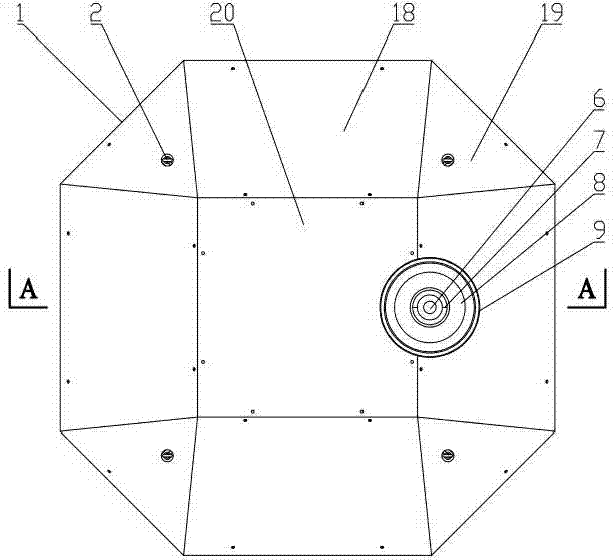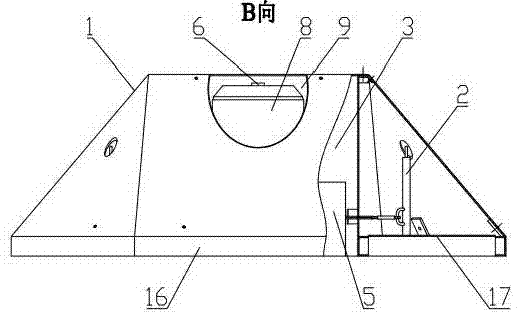Anti-trawl seabed base of ocean bottom seismograph
An anti-trawl, seabed-based technology, used in seismology and other directions in areas covered by water, can solve problems such as easy sinking into sediment, OBS dumping, small structural span, etc., to achieve easy deployment and recovery. , Ensure preservation and recycling, scientific and reasonable structure
- Summary
- Abstract
- Description
- Claims
- Application Information
AI Technical Summary
Problems solved by technology
Method used
Image
Examples
Embodiment Construction
[0019] As shown in the figure, the anti-trawling seabed base of the submarine seismograph is designed as a prism-shaped structure with a square top and an octagonal bottom. The bottom frame 16 is an octagonal frame structure with a large contact surface with the seabed, which increases the friction between the seabed and the seabed, can resist the erosion of the seabed sediment by the ocean current, and avoids the phenomenon that the equipment is covered. At the same time, the displacement of the instrument can be reduced. image 3 with Figure 4 It is shown that two anti-subsidence steel plates 17 are respectively installed at opposite positions on the bottom frame 16, so as to prevent the seabed foundation from being buried by silt. The "octagonal frustum-shaped cover" is hereinafter referred to as "the cover". The outer surface of the outer cover 1 is smoothed, and this shape design significantly reduces the occurrence of tilting collapse of the seabed foundation, draggin...
PUM
 Login to View More
Login to View More Abstract
Description
Claims
Application Information
 Login to View More
Login to View More - R&D Engineer
- R&D Manager
- IP Professional
- Industry Leading Data Capabilities
- Powerful AI technology
- Patent DNA Extraction
Browse by: Latest US Patents, China's latest patents, Technical Efficacy Thesaurus, Application Domain, Technology Topic, Popular Technical Reports.
© 2024 PatSnap. All rights reserved.Legal|Privacy policy|Modern Slavery Act Transparency Statement|Sitemap|About US| Contact US: help@patsnap.com










